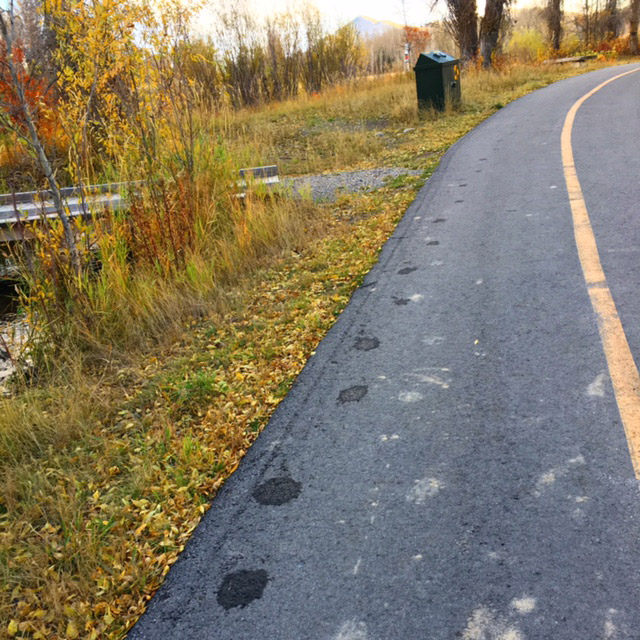Yesterday, I went cycling around western Wyoming. It was the penultimate morning of a writing retreat I’d spent almost entirely on my bike, and I was delighted to find no sign of the forecast snow. A few clouds were only just beginning to gather over a distant butte, so I rode out, confident I’d be well ahead of anything more serious. I made good time through goldenrod ranch country, with its jack fences and red autumn clearings and whorls of dead leaves, all the way down to the Snake River. Just over the bridge, the path corkscrewed through a marsh thickly bearded with willows and, as I gripped the handlebars through blind turn after blind turn, I occasionally let out a feeble ‘heeey bear . . .’, a warning I’d adopted to herald my presence to any nearby grizzlies, whose objections to a neon blur hurtling out of the woods I couldn’t help but imagine. The sun had long since vanished, and the wind was picking up. My fingers were numb. I turned around, resigned to the inevitability of biking home through a snowglobe. Doubling back through the marsh, however, I skidded to a halt. In the five minutes I’d been gone, a set of huge, wet hoofprints had appeared on the tarmac. Something had emerged from the creek, loped across the road, and vanished.
The length and evenness of that behemoth stride clarified everything. I began shouting, ‘heeey moose?’ as I pedaled uneasily along. There was no further sign of him: just a flat pond with the red woods quivering in it. The whoosh of wind in the aspens. I rested my toes on the ground and waited. I’d read somewhere that moose, in addition to being incredible swimmers, can dive down to fifteen feet. What strange agility for an animal that weighs a thousand pounds and, to me, looks like it got ready in the dark and left the house without checking the mirror. The longer I waited, the more convinced I became of his presence. He was down there, underwater, holding his breath, refusing to surface. His moosey stubbornness made sense, somehow – for in all my years of encounters, I had yet to witness a moose arriving on the scene. They always simply manifest, like a reversible picture suddenly reinterpreted: you are glassing a ridge, and what you thought – no, swore – was a boulder, turns out to have spork antlers and a dewlap. You look up from changing a camera lens to find that a tree trunk has gotten to its feet.
That is part of a moose’s magic: we’re not meant to know where they go when they melt into the shadows. We’re not meant to break the spell of their return.








